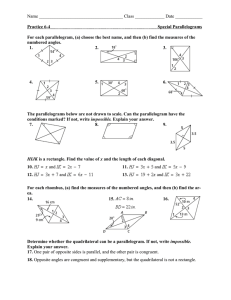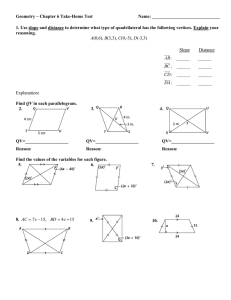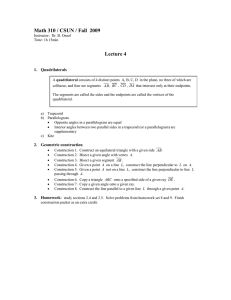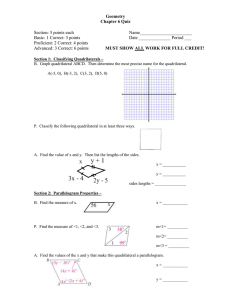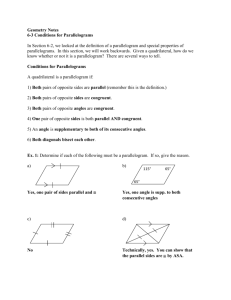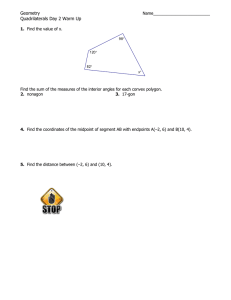Today we will understand parallelograms
advertisement
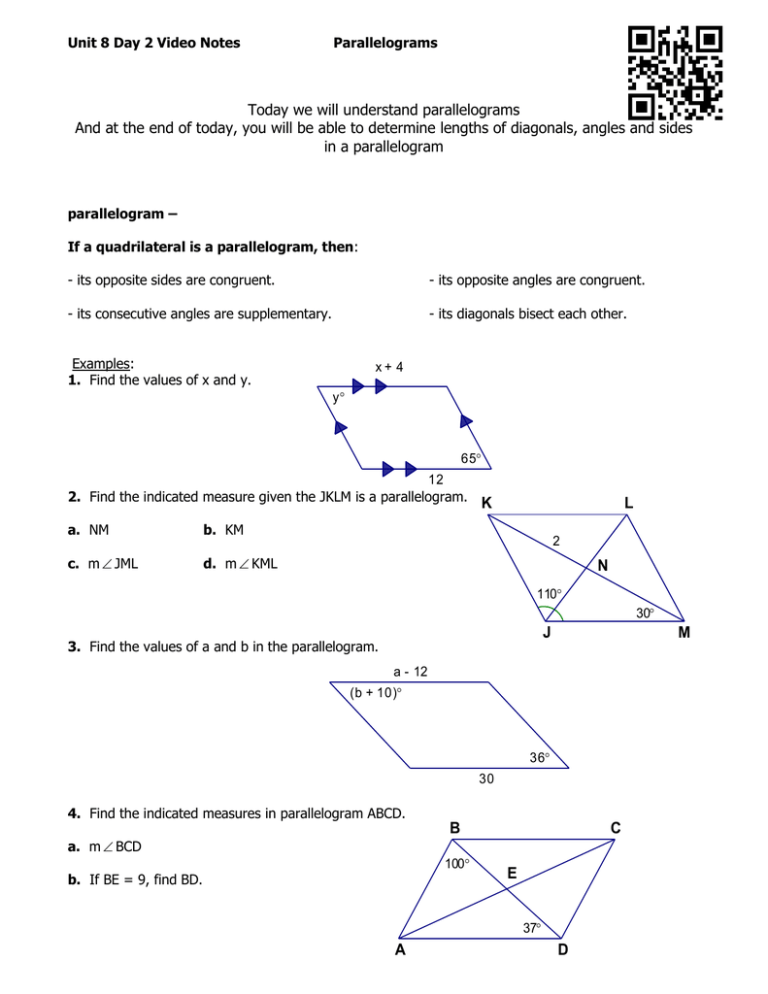
Unit 8 Day 2 Video Notes Parallelograms Today we will understand parallelograms And at the end of today, you will be able to determine lengths of diagonals, angles and sides in a parallelogram parallelogram – If a quadrilateral is a parallelogram, then: - its opposite sides are congruent. - its opposite angles are congruent. - its consecutive angles are supplementary. - its diagonals bisect each other. Examples: 1. Find the values of x and y. x+ 4 y 65 12 2. Find the indicated measure given the JKLM is a parallelogram. a. NM b. KM c. m JML d. m KML K L 2 N 110 30 J 3. Find the values of a and b in the parallelogram. M a - 12 (b + 10) 36 30 4. Find the indicated measures in parallelogram ABCD. B C a. m BCD 100 b. If BE = 9, find BD. E 37 A D How do I know if a quadrilateral is a parallelogram? If…. - both pairs of opposite sides of a quadrilateral are congruent - both pairs of opposite angles of a quadrilateral are congruent - one pair of opposite sides of a quadrilateral are congruent and parallel - the diagonals of a quadrilateral bisect each other Examples: 1. In quadrilateral WXYZ, m W = 42°, m X = 138°, m Y = 42°. Find m Z. Is WXYZ a parallelogram? C 2. For what value of x is quadrilateral CDEF a parallelogram? 5x - 8 F 3x D E What reasoning can you use to show that the quadrilateral is a parallelogram? 3. 4. 5. 7 in 30 m 65 5 in 115 5 in 7 in 30 m 115 65
